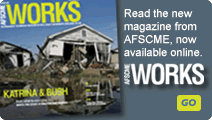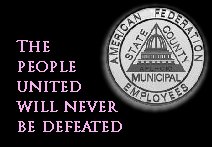 History History
 Purpose Purpose
 Board Board
 What's Up What's Up
 Stories Stories
 Newsletter Newsletter
 Participate Participate
 Join Join
 Members Members
 Home Home
*
|
History of Unions >
Everyone in America (unionized or not) has reaped the rewards from unionized people (men, women, as well as children) who came before us. They (some with their lives) gave us:
- 40 hour work weeks
- Overtime pay, comp time
- Vacation
- Sick days
- Workplace safety and more...
Did you know that the U.S. government was behind breaking unions with force as well as the employers?
Did you know that the violence associated with unions came from all sides, not just the early unions? Don't forget America's roots, as history does repeat itself.
18th Century: The first American unions/guilds of carpenters, cabinet makers, and cobblers appeared. The Boston Tea Party is a great example of American history to show that Britain could not continue its bad treatment of the new Americans and their work for Great Britain.
19th Century: The early 1800s saw the first legal gatherings of groups, called federations, to support the common objectives for the working people. They were ineffective then, but had the forsight to understand that the employer could enforce their power over the worker and abuse them.
The Nation Labor Union was created in 1866. This entity eventually persuaded Congress to pass an eight hour work day for Federal workers.
The Knights of Labor was a relatively brief union that captured the public's attention. This union dissolved as the unskilled and skilled workers who comprised their membership had difficulties working together.
The American Federation of Labor (AFL) was founded in 1886 during the onset of the industrialization of America. During the late 19th century, the ability for the American government and its military to break strikes was showcased.
20th Century: During a 1902 strike of anthracite coal miners, President Theodore Roosevelt intervened to assist in strike mediation and arbitration, which were the forerunning activities to better treat unionized activities by the U.S. government.
Not only were labor unions instrumental in determining work hours and overtime, they helped in securing safe working environments. This was seen in the Triangle Shirtwaist Co. fire in 1911 in New York. Approximately 150 employees, mostly women, perished. This inspired Franklin Roosevelt's secretary of labor, Frances Perkins, the first woman cabinet member in history, to help create the reforms needed for workplace safety.
AFL lobbied Congress to create our U.S. Department of Labor that is legislatively mandated to protect and extend the rights of workers. From this, the Children's Bureau was also created to prevent exploitation and victimization in the workplace. Legislative acts that further enforced better treatment of employees came from The LaFollette Seaman's Act, and most importantly, the Clayton Act of 1914 (which brought down the Sherman Act which was created for employers to have legal injunctions against union organizing). Because of the Clayton Act, peaceful strikes, boycotts, and picketing were legalized.
During and after World War I and the Depression, wages sunk and efforts were magnified to rid of unionization by several fronts in America and abroad. Marketing of unions as communist and un-American were promoted. The use of strikebreaking, vigilanteeism, and blacklisting were part of the marketing program of this new patriotism. A "yellow dog contract" emerged which employees signed to ensure they would never join a union.
The Committee for Industrial Organization (CIO) was created in 1935, which comprised over ten AFL unions. This unionized front was to deal with industrial unionism. Industrial unions were that, one union for an entire industry no matter the skill levels of the worker. Bitter quarrels sprung from the CIO and AFL, where in 1936, CIO unions were being expelled from the AFL. From that CIO and AFL split, the CIO in 1938 organized its own first constitutional convention.
During World War II, both the CIO's and AFL's separate efforts on industry unionization were successful. They re-joined in 1955 in New York.
The AFL-CIO merger assisted with negating the in-fighting between unions and their different agreements. The AFL-CIO is the parent organization to AFSCME.
The above history is based on information from The Labor Union Movement in America, retrieved on September 21, 2007.
[top]
|
|

-.gif)
-
|



![]() History
History![]() Purpose
Purpose![]() Board
Board![]() What's Up
What's Up![]() Stories
Stories![]() Newsletter
Newsletter![]() Participate
Participate![]() Join
Join![]() Members
Members![]() Home
Home![]()

.gif)





.gif)
